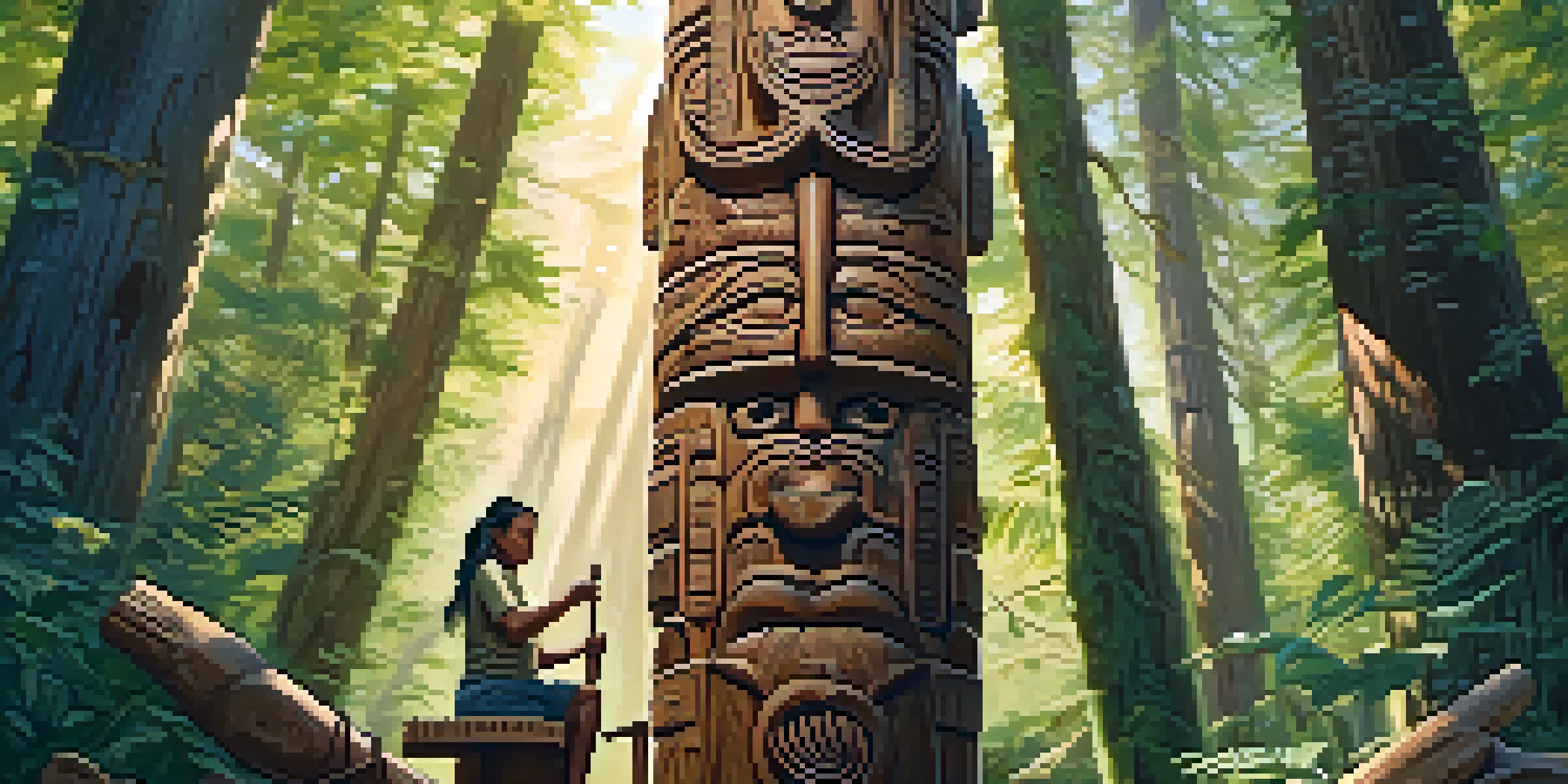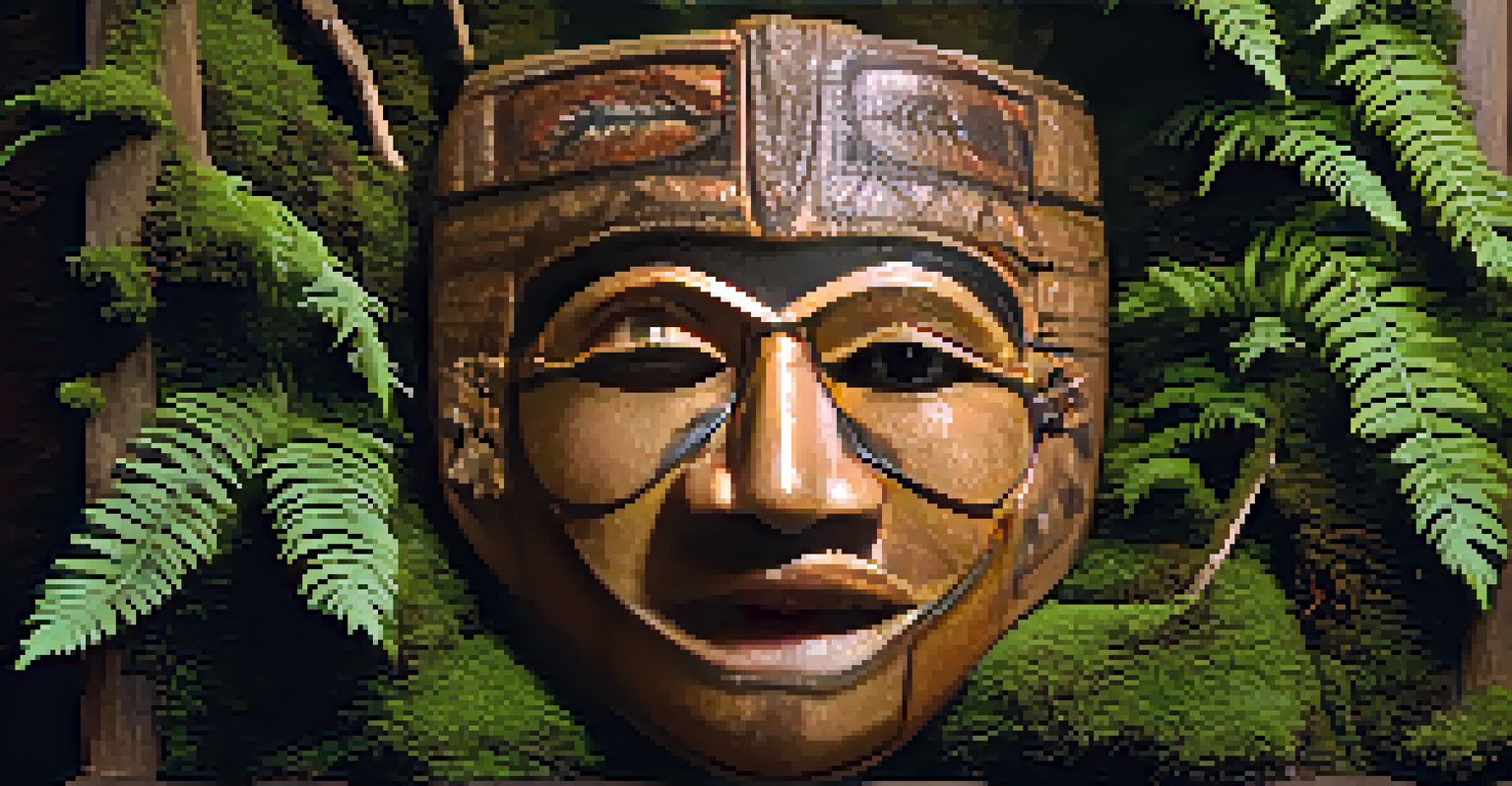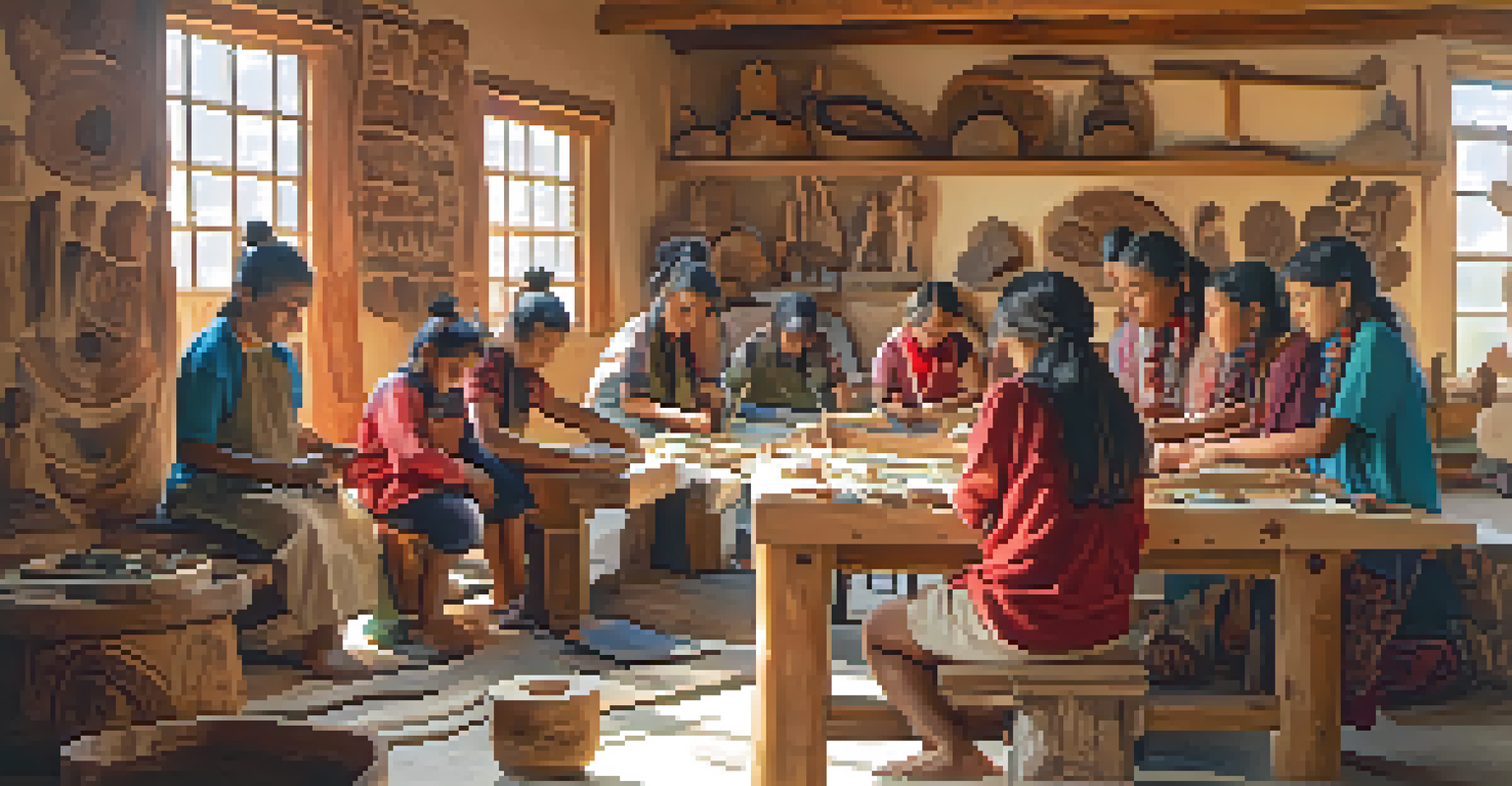Cultural Significance of Carving in Indigenous Societies

The Art of Carving: A Window into Indigenous Cultures
Carving is not just an art form; it's a profound expression of identity in Indigenous cultures. Each piece tells a story, capturing the essence of the creator's heritage and beliefs. Through these carvings, artisans communicate their connection to land, ancestry, and community, making it an invaluable cultural artifact.
Art is the most beautiful of all lies; it is a lie that tells the truth.
For many Indigenous societies, carving is a practice that transcends mere aesthetics. It encapsulates historical narratives, spiritual beliefs, and communal values. This art form often serves as a visual language, where symbols and designs represent deeper meanings that resonate with the community's collective identity.
Moreover, carving contributes to the preservation of traditions that might otherwise fade over time. As younger generations learn these skills, they not only keep the art alive but also foster a sense of pride and belonging, ensuring that their cultural heritage continues to thrive.
Materials Matter: The Significance of Natural Resources
The choice of materials in carving reflects both the environment and the values of Indigenous societies. Commonly used materials include wood, stone, and bone, each carrying its own symbolic meaning. For instance, cedar is often favored for its durability and spiritual significance in many coastal Indigenous cultures.

By utilizing locally sourced materials, carvers forge a direct connection to their surroundings. This practice not only highlights the importance of sustainable resource use but also emphasizes the relationship between the community and the natural world. Each carving becomes a testament to the land's gifts and the respect artisans hold for it.
Carving as Cultural Identity
Carving serves as a profound expression of identity, connecting Indigenous artisans to their heritage, beliefs, and community.
Additionally, the act of carving itself can be seen as a ritual. The process often involves prayers and reflections, making it a meditative practice that deepens the connection between the artist and their environment. This adds layers of meaning to the final piece, transforming it into a sacred object.
Storytelling Through Carving: Narratives in Wood and Stone
One of the most compelling aspects of carving is its role in storytelling. Each carving often depicts legends, myths, or historical events that hold significance for the community. These narratives are not just for entertainment; they serve educational purposes, passing down wisdom and values to future generations.
Tradition is not the worship of ashes, but the preservation of fire.
For example, many Indigenous cultures use carvings to illustrate the relationship between humans and nature, emphasizing respect and coexistence. These stories are embedded in the artwork, inviting viewers to engage with the deeper meanings behind each piece. It's a way to keep traditions alive and relevant.
Moreover, storytelling through carving fosters a collective memory among community members. As people come together to view and discuss the art, they reinforce social bonds and shared histories. This communal aspect enriches the cultural fabric and ensures that these stories continue to resonate.
Spiritual Connections: Carving and Indigenous Beliefs
In many Indigenous cultures, carving is intertwined with spiritual beliefs and practices. Carvings often represent deities, ancestral spirits, or other sacred elements, serving as a medium for prayer and reflection. This connection elevates the art form beyond mere decoration, making it a vital component of spiritual life.
The act of carving can be seen as a spiritual journey for the artist. Many believe that through carving, they channel the spirits of their ancestors, allowing them to participate in the creative process. This belief adds a sacred dimension to the artwork, inviting viewers to appreciate its spiritual significance.
Materials Reflect Values
The choice of materials in carving highlights the relationship between Indigenous communities and their environment, emphasizing sustainability and respect for natural resources.
Additionally, ceremonial carvings are often created for specific rituals or events, reinforcing the connection between art and spirituality. Whether it's a totem pole or a ceremonial mask, these pieces play crucial roles in rituals, acting as conduits for cultural expression and spiritual connection.
Cultural Preservation: Carving as a Living Tradition
Carving serves as a vital tool for cultural preservation in Indigenous societies, ensuring that traditions are passed down through generations. Many artisans dedicate their lives to mastering the craft, often learning from elders who impart knowledge and techniques. This mentorship is crucial for keeping cultural practices alive.
In recent years, there has been a resurgence of interest in traditional carving techniques. Communities are recognizing the importance of their heritage, leading to workshops and programs aimed at teaching younger generations. This revival not only preserves the art form but also strengthens community ties.
Moreover, the global appreciation for Indigenous art has opened new avenues for cultural exchange. By showcasing their work in galleries and exhibitions, Indigenous carvers can share their stories with a broader audience, fostering understanding and respect for their heritage.
Challenges Faced by Indigenous Carvers Today
Despite the rich cultural significance of carving, many Indigenous carvers face challenges in today's world. Issues such as commercialization and appropriation can undermine the authenticity of their work, leading to concerns about cultural exploitation. This makes it essential for communities to advocate for their rights and protect their art forms.
Additionally, access to traditional materials is becoming increasingly limited due to environmental changes and industrialization. Carvers may struggle to find quality resources, forcing them to adapt their practices. This not only impacts the art itself but also the cultural narratives tied to it.
Challenges in Modern Carving
Indigenous carvers face challenges like commercialization, environmental changes, and the impact of digital technology, which threaten the authenticity and sustainability of their art.
Furthermore, the rise of digital technology presents both opportunities and challenges. While some carvers embrace new tools and platforms for sharing their work, there's a risk of losing the traditional techniques that define their art. Balancing innovation with tradition is crucial for the sustainability of Indigenous carving practices.
The Future of Carving in Indigenous Societies
Looking ahead, the future of carving in Indigenous societies is marked by both hope and resilience. As communities continue to embrace their cultural heritage, there's a growing movement to revitalize traditional practices and techniques. This renewed focus on carving can lead to a reawakening of cultural pride and identity.
Moreover, collaborations between Indigenous artists and contemporary creators are opening new avenues for artistic expression. By blending traditional methods with modern influences, carvers can explore innovative ways to tell their stories. This fusion not only keeps the art form dynamic but also engages a wider audience.

Ultimately, the cultural significance of carving will endure as long as there are passionate artisans dedicated to their craft. By nurturing these traditions and advocating for their rights, Indigenous communities can ensure that the art of carving remains a vital part of their cultural landscape for generations to come.